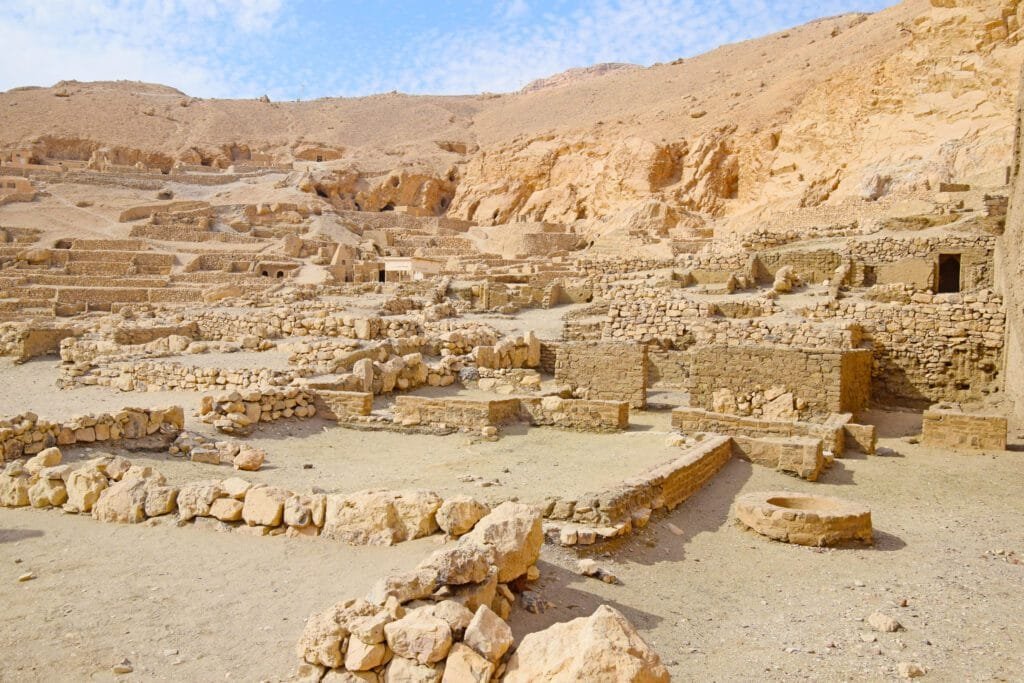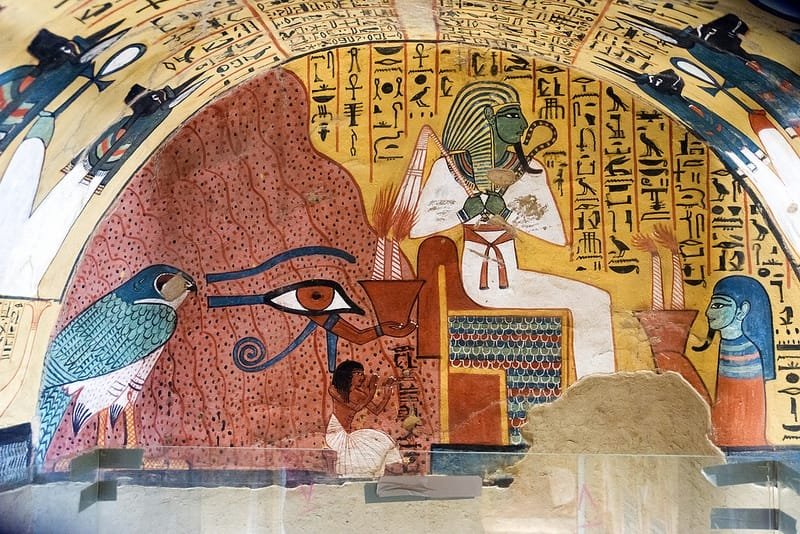Deir el-Medina, situated on Luxor’s West Bank, is one of the most fascinating archaeological sites in Egypt. Known in ancient times as “Set Maat” or the “Place of Truth,” this village was home to the skilled artisans and craftsmen who built and decorated the royal tombs in the Valley of the Kings and the Valley of the Queens. A visit to this site provides unparalleled insights into the daily lives, work environment, and beliefs of these talented workers during the New Kingdom era.
The village was established during the reign of Pharaoh Thutmose I in the 18th Dynasty and remained active until the 20th Dynasty. The layout of the settlement consisted of tightly packed mudbrick houses, designed to provide both functionality and comfort in the harsh desert environment. These homes typically included courtyards, storage areas, and living quarters, offering a glimpse into the private lives of the artisans. The community was well-organized, and evidence suggests that workers received food rations and enjoyed a structured lifestyle.




